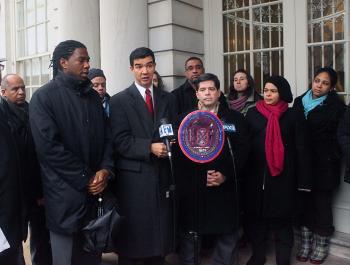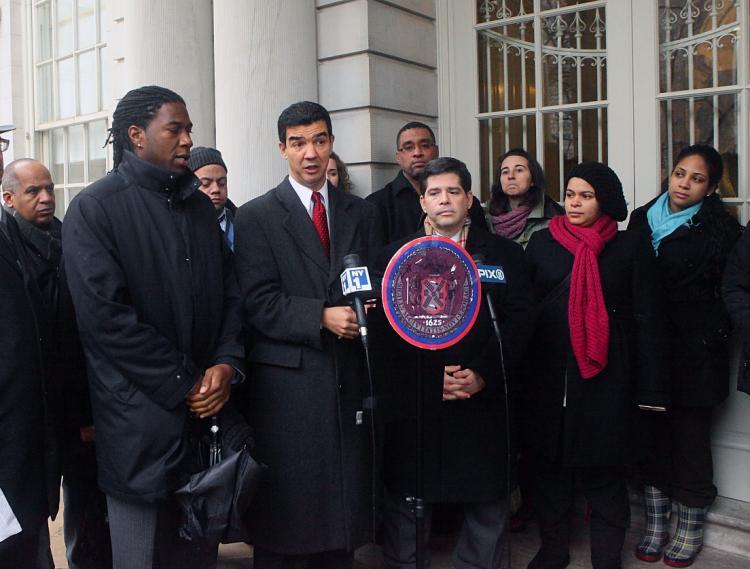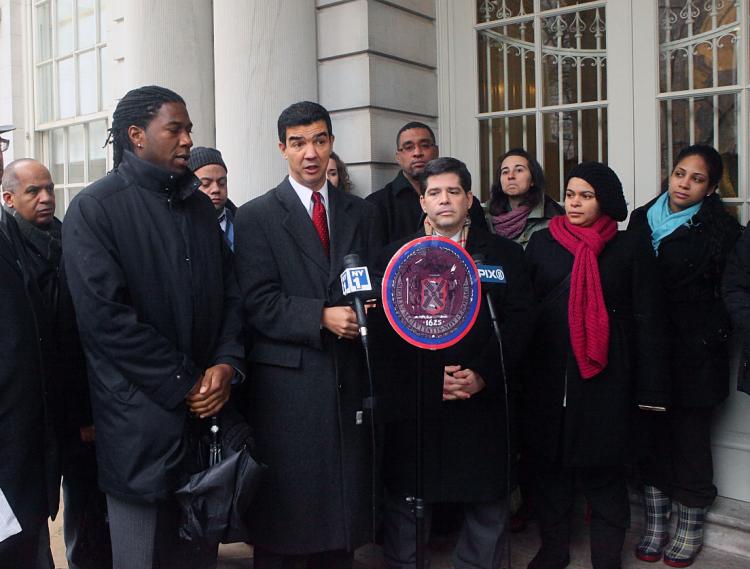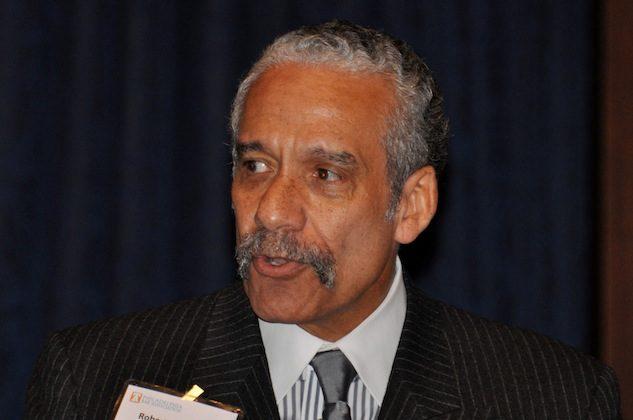NEW YORK—During the recent snowstorms, drivers in New York City have had their fair share of headaches. After Mayor Michael Bloomberg’s proposal to have GPS locators installed on the city’s 1,700 snowplows, Councilman Ydanis Rodriguez has now advised additional GPS installation in the city’s 335 street sweepers as part of his alternate side parking regulations that was originally introduced in October.
Rodriguez was joined by Manhattan Borough President Scott Stringer and other elected officials to announce bill 375, which seeks to alleviate some of the hassles of alternative side parking during street cleaning.
The bill aims to make it legal for cars to park on the restricted sides of streets once the road has been cleaned by sweepers.
Rodriguez says the GPS locators would help residents to track whether a street sweeper has already passed by through a variety of proposed channels including 311, and other online or text-based notifications. He estimates the overall cost will not exceed the $6,000 figure estimated for the installation on the snowplows.
“People’s whole day revolves around when to move the car,” said Stringer. “The mission is this: when the sweeper comes, get out of the way, but when the sweeper is not around, let’s take a common sense approach to how people will park in New York.”
Supporters would be looking to get the GPS systems installed in the spring. Rodriguez says the investment is minimal when compared to the time New Yorkers would be saving, as well as the environmental impact from the hours of idling.
“We should not keep parking spots clear if the street has already been cleaned because it’s a burden on those who double park and those who are trapped by those who had to move their cars,” said Councilman Vincent J. Gentile.
Rodriguez was joined by Manhattan Borough President Scott Stringer and other elected officials to announce bill 375, which seeks to alleviate some of the hassles of alternative side parking during street cleaning.
The bill aims to make it legal for cars to park on the restricted sides of streets once the road has been cleaned by sweepers.
Rodriguez says the GPS locators would help residents to track whether a street sweeper has already passed by through a variety of proposed channels including 311, and other online or text-based notifications. He estimates the overall cost will not exceed the $6,000 figure estimated for the installation on the snowplows.
“People’s whole day revolves around when to move the car,” said Stringer. “The mission is this: when the sweeper comes, get out of the way, but when the sweeper is not around, let’s take a common sense approach to how people will park in New York.”
Supporters would be looking to get the GPS systems installed in the spring. Rodriguez says the investment is minimal when compared to the time New Yorkers would be saving, as well as the environmental impact from the hours of idling.
“We should not keep parking spots clear if the street has already been cleaned because it’s a burden on those who double park and those who are trapped by those who had to move their cars,” said Councilman Vincent J. Gentile.





